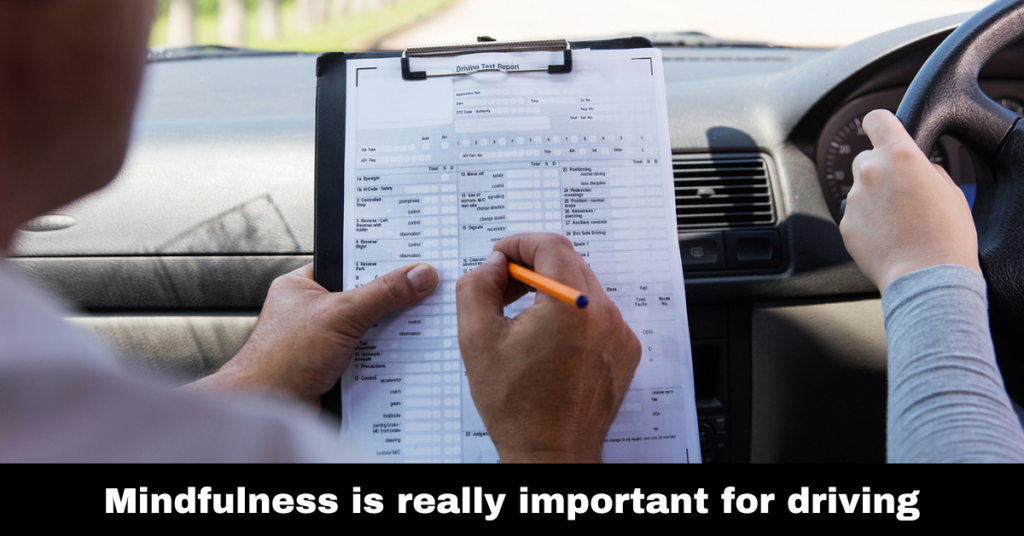Mindfulness instruction has been investigated with respect to driver knowledge and performance. Students who were enrolled in a Buddhist psychological class were taught to concentrate their attention on techniques of breath and mind in which they learned critically to note something that happens in the consciousness. These students practiced these exercises every day to develop their perception and concentration. Students who were participating in the psychological course of a human element did not teach mindfulness training activities as a control group. Students in Buddhist psychology scored significantly on a scale that was used to test their ability to focus, although there were substantial differences in mindfulness between groups. Situation consciousness in a driving simulator was evaluated using a query process. The level of mindfulness and focus was also linked to driving perception. Mindfulness training can have a major impact over time on actual driving performance by enhancing drivers’ environmental awareness and helping them to block distractions and recognize anger quickly.
Practice mindful driving:
There are several meditation laws and practices in mindfulness. There is one unique form of work. Don’t crash your car. Nobody wants to suggest to you that you don’t shut your eyes, so it’s easy to see a scenario where somebody’s so concentrated on respiration that they’re forgetful about braking. Be mindful of driving means focusing on the driving, so you have probably done wrong if you end up in a ditch or in a field. Here are some tips to improve your practice with your next long trip.
- Be present:
This is a special driving task. The car is advancing, with all the luck, so that the ambient environment changes constantly. Our views are met with new objects, vistas, and signs and then shift after us. The road trip is a tangible representation of what we can do in meditation, however: see what happens, observe it as completely as possible, let it go without thinking about it. The notion of remaining in the present moment is more difficult. A big mental exercise to concentrate on this specific moment of driving, not the destination. Staying open to all sensory experiences, from traffic to the feeling of the gas pedal and looking at what is within and behind the car as well as beyond, will allow us to feel the fullness of our immediate world.
- Sit and Breath:
The bulk of what you are going to do on a long journey is sitting and breathing. Regardless of the technology you are using, you can use the endless time you really do it well. Start with a straight back and a relaxed stance. Clearly, as you go, you can do stuff — check mirrors, press brakes so try to move purposefully to center your body after every move. Long trips provide us with a wonderful and awful chance to sit without fidgeting. Maintaining the muscles calm should help the body stay still. The depth and regularity of our respiration should prevent wandering and impatience of our minds.
- Speed reduction:
On the road, it is mentally hard to slow down. No one wanted a minute longer than they actually had to spend in the car somewhere. Others are also speeding faster than we do, but there is an instinctive part of us driving by that also tenses and speeds up. Speeding is a symbol of distracting us from what we do. Instead of enjoying the trip, we want to hurry up and get done with it.
- Wish drivers well:
Naturally and justly, wrath will come in you as this whole pylon with the Red Maserati goes all up at the back of the vehicle, travels in the trunk for some time, and then swirls wildly around you until you break off, without signals, and throw a non-full vacuum cup onto your vehicle as they speed into the sunset. The nonsensical rudder of that person gives you, the sensitive driver, the ability not to respond badly. Keep conscious of the beginning of rage or resentment and encourage the emotions to go from the knees. Take a deep breath to alleviate your obviously negative feelings and turn them into a constructive experience by confronting other bad drivers with your passion for health and peace.
Conclusion:
Mindful driving has a lot of advantages. It distractions us less and makes us drivers less irritated. It makes us more comfortable drivers. If you cease to have value in the outside world you drive. You should then pull over and avoid meditating. It also improves our chances at the end of a journey to get out of the car and feel good, less anxious, and more prepared to take advantage of whatever we do at the end of the route.

